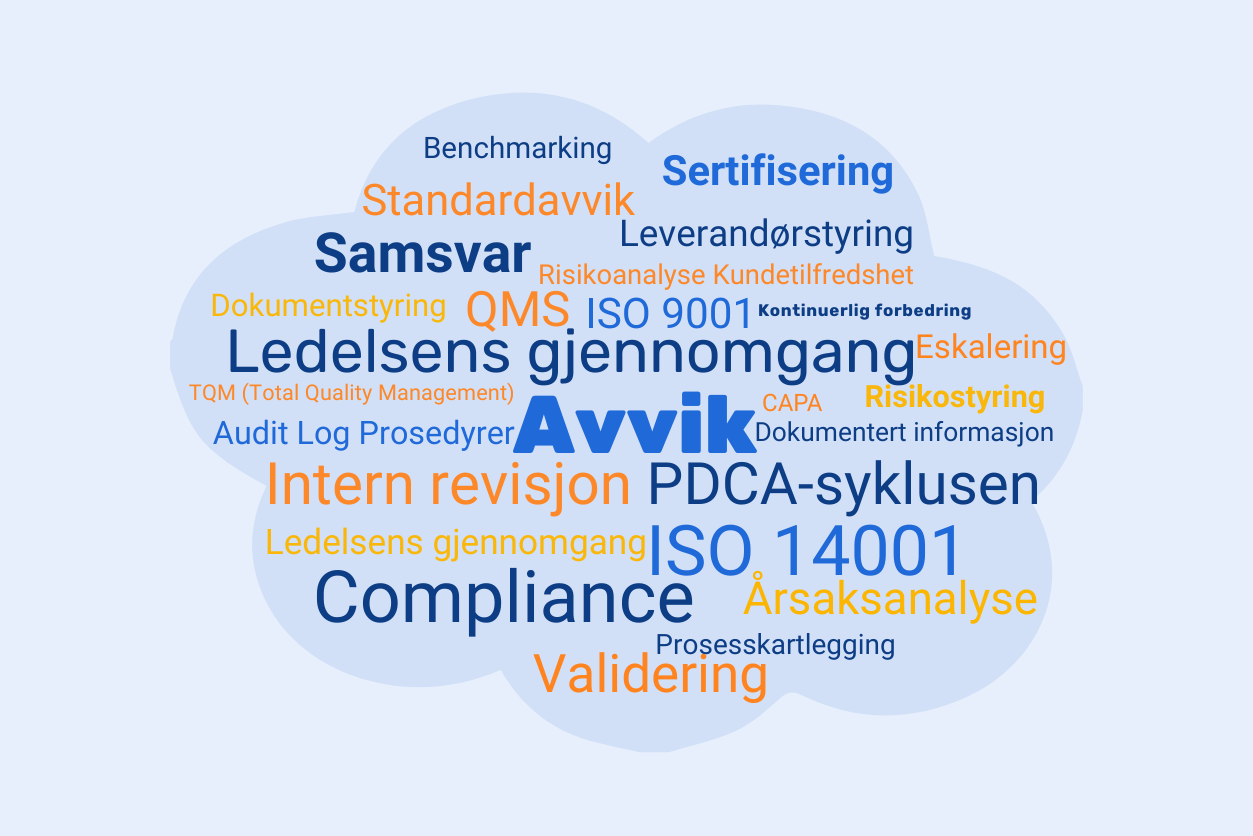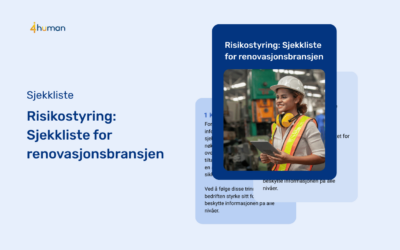QMS glossary

QMS glossary: Terms and abbreviations that those of you who work with quality and management systems should know
Here are terms and abbreviations you should know if you work with quality systems (QMS) – whether you are new to the role or want a refresher. Having an overview of the most commonly used expressions in quality management, auditing and continuous improvement can make communication more precise, strengthen compliance with standards such as ISO 9001, and contribute to better interaction across the organization. With a good grasp of the QMS language, it becomes easier to understand the requirements, document processes correctly and actively contribute to the improvement work. Explore our glossary and become more confident in the quality language!
QMS glossary
A
Audit Log : A traceable log of changes and activities in the system, important for auditing and compliance.
Nonconformity : An event in which a requirement, process, or result does not meet specified standards or expectations.
B
Benchmarking : Comparing your own processes and results with best practices in the industry.
C
CAPA : Abbreviation for Corrective and Preventive Action. Measures to correct and prevent recurrence of non-conformities.
Compliance : Adherence to laws, regulations and standards.
D
Documented information : Information required to support the QMS and demonstrate compliance with ISO 9001.
Document management : Systematic control of documents to ensure that only valid and up-to-date versions are in use.
E
Escalation : Process of elevating a problem to a higher level in the organization for resolution.
F
FMEA (Failure Mode and Effects Analysis ): Systematic method for identifying and reducing risks in processes.
G
GAP analysis: With a GAP analysis, your business gets an overview of the documentation you have against current requirements.
H
HSE : Health, Environment and Safety – often integrated with QMS in many businesses.
IN
ISO 9001: International standard for quality management systems
Stakeholders : Individuals or groups who are affected by or have an interest in the QMS (e.g. customers, employees, authorities).
Internal audit : A systematic review of processes and procedures to ensure compliance with internal and external requirements.
K
Calibration : Adjustment and verification of measuring instruments to ensure accuracy.
Continuous improvement : A sustained effort to improve products, services, or processes.
Corrective action : Action taken to eliminate the cause of an identified nonconformity.
Customer satisfaction : An important indicator of quality, often measured through surveys and feedback.
L
Management review : Periodic assessment of the QMS by top management to ensure effectiveness and opportunities for improvement.
Supplier management : Processes for evaluating and following up on suppliers to ensure quality in deliveries.
M
Key performance indicator (KPI): Key figure used to measure performance and quality in processes.
N
Non-conformance (NC ): A documented deviation from requirements or specifications.
P
The PDCA cycle: Plan-Do-Check-Act – a method for continuous improvement.
Procedures : Descriptions of how specific tasks or processes should be performed.
Process mapping : Visualization of work processes to identify areas for improvement.
Q
QMS : A quality management system (QMS) is a structured framework of processes, procedures, and policies that an organization uses to ensure that products and services meet customer and regulatory requirements – and to continually improve quality.
R
Audit findings : Results from an internal or external audit, may be discrepancies, observations or improvement suggestions.
Risk analysis : Assessment of potential events that could affect quality or compliance.
Risk management : Identification, assessment and management of risks that may affect quality.
S
Compliance : Adherence to requirements, whether from laws, regulations or internal standards.
Certification : Official confirmation that a QMS meets the requirements of a standard, such as ISO 9001.
Traceability : The ability to follow the history of a product or process throughout the entire value chain.
Standard deviation : A measure of variation in processes or results.
T
TQM (Total Quality Management ): A holistic approach to quality management that involves the entire organization.
Multidisciplinary team : A group of representatives from different disciplines who collaborate on quality improvement.
V
Validation : Confirmation that a system or process meets the requirements for use.
Whistleblowing : Reporting critical incidents or deviations, often anonymously.
Verification : Confirmation that a product or service has been produced according to specifications.
OH
Root Cause Analysis: Method for finding the underlying cause of a problem or deviation.
Get a simplified overview of various activities and planned events in the checklist for a living quality system 👇
Download checklist: A year wheel for a living quality system
Download checklist: A year wheel for a living quality system
Related posts
Checklist: Risk management for the waste management industry
Risk management is about identifying, analyzing and managing potential threats and opportunities that can affect the organization's goals. I...
3 key points for a successful implementation of ISO 9001
Implementing ISO 9001 may seem like a big task, but it's a worthwhile investment that strengthens the quality of your processes and improves...
4human QM365 supports us in our work with a living management system
Comrod AS is a company that works with the development and production of antennas and antenna systems for both the defense and civilian markets. They are part of a...


